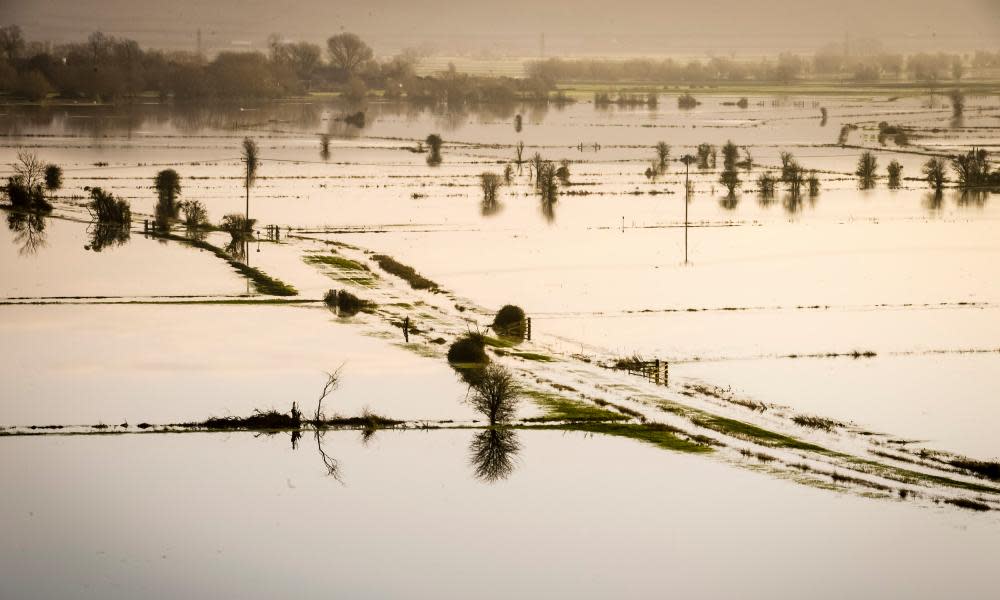Flood defence plans heavily favour London and south-east

The government’s planned spending on flood defences heavily favours London and the south-east of England, according to a new analysis, with spending per person up to 13 times higher than in other regions.
The recently published plans set out spending to 2021 and, for major projects, beyond that date. By far the largest projects are those for the Thames estuary, leading to 60% of the planned spending going to London and south-east, home to 32% of England’s population.
Accusations of a north-south divide in flood defence spending were dismissed by then prime minister David Cameron after severe floods across northern England in December 2015. But the new research indicates southern areas will receive significantly more money. It was conducted by analysts at Carbon Brief and takes into account the £700m funding boost announced after those floods.
Flood defence projects are funded according to a cost-benefit formula, so the much higher property prices in the south-east make projects there look better value for money. But critics said the formula is flawed and unfair.
“All communities in all parts of the country deserve to get a fair share,” said Labour MP Mary Creagh, chair of parliament’s environmental audit select committee. “After ministers told my committee the money would be spent according to a ‘political calculation’ rather than rigorous economic criteria, we warned this risked creating unfair regional outcomes. These figures show what happens when the government puts politics ahead of protecting communities and businesses from flooding.”
The new analysis assesses the funding in place until 2021 and also the anticipated spending on large projects that will completed after that date. The Thames estuary projects are about 10 times more costly than the other long-term projects included in the Environment Agency’s published plans.
The Thames projects in the London and south-east regions are set to cost £917m and £817m respectively and are described as “phase 1” in the documents. The next biggest project is for the Fylde coast in Lancashire, expected to cost £94m. Other large long-term projects are for the Lincolnshire coast near Skegness, at £65m, and at Warrington in Cheshire, at £34m.
When the spending per capita is calculated, the south-east is highest at £180, London second at £116 and Yorkshire and the Humber at £83. Lowest is the West Midlands at £14, although this region has no coastline and therefore no risk of flooding from the sea, while the north-east is second lowest at £33 a head. If only the spending until 2021 is included, and not the longer-term projects, the per capita spend is highest in Yorkshire and Humber region, followed by the south-east.
The Environment Agency documents set out plans as they stand today but the agency said the new analysis could not take account of spending decisions taken in the future. “This analysis of our flood defence spending is flawed and extremely misleading,” said a spokesperson. “Our current investment programme runs up to 2021 and we have not yet fully allocated funding for new flood schemes around the country beyond this date.
“We know the devastating impact that flooding has and invest in flood defences where the risk is highest, wherever that may be across the country, giving each scheme careful consideration to where it will benefit the most people and property.”
An analysis of the system for allocating taxpayers’ money to flood defence schemes, published in October 2016, suggested it favours protecting wealthy families and those in the south-east. The calculation looks at direct damages for homes and other buildings and their contents and clean-up costs, as well as indirect damages such as disruption to transport links, water and electricity.
The costs of flooding for larger homes are considered to be up to several times greater than for smaller ones. Furthermore, people in higher social classes are considered to have better-quality household items than working-class families, so losses from their properties are valued higher. Estimated costs are also capped at the market values of the properties, which are much higher in the south-east.
A report from the Joseph Rowntree Foundation in 2012 warned that poorer communities lack resources and would therefore suffer more from flooding, stating: “There is a north-south divide in extreme socially derived flood-vulnerability in England.”
Guy Shrubsole, at Friends of the Earth, said: “The new figures show a startling divide in flood defence spending – the wealthy south-east gets protected while poorer communities in East Anglia have to sink or swim.”
“Some of the differences are down to where flood risk is highest,” he added. “But this also raises questions about whether the government’s system for allocating flood defence funding is skewed towards wealthier regions and households. As climate change drives up rainfall and sea levels, we need to protect all Britons against flooding, not just those deemed economically important by a cold cost-benefit calculation.”

 Yahoo News
Yahoo News 
